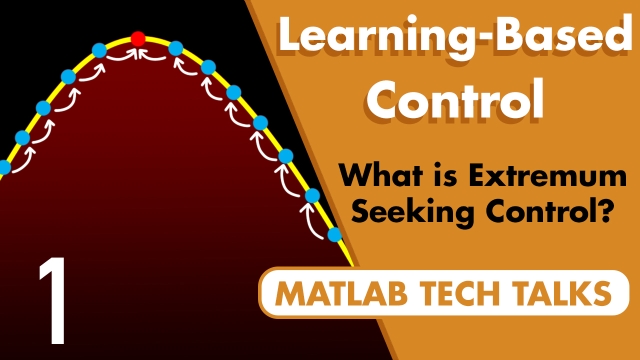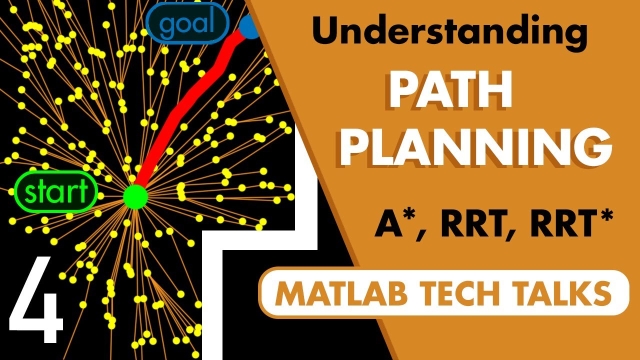
These are all of the MATLAB Tech Talk videos that I mention in the video "Everything you need to know about Control Theory".
Everything You Need to Know About Control Theory
Control theory is a mathematical framework that gives us the tools to develop autonomous systems. Walk through all the different aspects of control theory that you need to know.
Some of the...
See MoreThe Tech Talk video loosely follows the layout that I created for the Map of Control Theory. It's worth checking this out if you're looking for an overview of different control methods and techniques.
The Map of Control Theory
All of control theory in one map. The idea behind this map is not to capture everything within control theory, it is to highlight some of the main areas of the field and provide a few...
See MoreLike in the video, we start here with open loop or feedforward control.
Control Systems in Practice, Part 3: What is Feedforward Control?
A control system has two main goals: get the system to track a setpoint, and reject disturbances. Feedback control is pretty powerful for this, but this video shows how feedforward control...
See MoreAn important concept for control systems is that the system is actually controllable! Later, when we talk about feedback control then the concept of observability also becomes important.
State Space, Part 3: A Conceptual Approach to Controllability and Observabil...
This video helps you answer two really important questions that come up in control systems engineering: Is your system controllable? And is it observable? Assuming you have a good linear...
See MoreTo develop a good controller, we usually need a mathematical representation of the system. Here are three ways to build a model.
Understanding PID Control, Part 5: Three Ways to Build a Model
Tuning a PID controller requires that you have a representation of the system you’re trying to control. This could be the physical hardware or a mathematical representation of that hardware...
See MoreWe can also develop a model with data and system identification. This video is the start of a series that goes into more depth on the topic.
What Is System Identification? | System Identification, Part 1
Get an introduction to system identification that covers what it is and where it fits in the bigger picture. See how the combination of data-driven methods and physical intuition can improve...
See MoreThe next 11 resources in this journey are all different closed loop controller techniques.
Understanding PID Control, Part 1: What is PID Control?
Chances are you’ve interacted with something that uses a form of this control law, even if you weren’t aware of it. That’s why it is worth learning a bit more about what this control law is...
See MoreState Space, Part 2: Pole Placement
This video provides an intuitive understanding of pole placement, also known as full state feedback. This is a control technique that feeds back every state to guarantee closed- loop...
See MoreControl Systems in Practice, Part 2: What is Gain Scheduling?
Often, the best control system is the simplest. When the system you’re trying to control is highly nonlinear, this can lead to very complex controllers. This video continues our discussion...
See MoreRobust Control, Part 1: What Is Robust Control?
This videos covers a high-level introduction to robust control. The goal is to get you up to speed with some of the terminology and to give you a better understanding of what robust control...
See MoreRobust Control, Part 5: H Infinity and Mu Synthesis
This video walks through a controller design for an active suspension system. Actually, we design two controllers. For the first, we use H infinity synthesis to design a controller for a...
See MoreWhat Is Extremum Seeking Control? | Learning-Based Control
Get an introduction to extremum seeking control—an adaptive control method for finding an optimal control input or set of system parameters without needing a model of your system, static...
See MoreAdaptive Control Basics: What Is Model Reference Adaptive Control?
Use an adaptive control method called model reference adaptive control (MRAC). This controller can adapt in real time to variations and uncertainty in the system that is being controlled...
See MoreState Space, Part 4: What is LQR control?
The Linear Quadratic Regulator (LQR)LQR is a type of optimal control that is based on state space representation. In this video, we introduce this topic at a very high level so that you walk...
See MoreUnderstanding Model Predictive Control, Part 1: Why Use MPC?
Learn about the benefits of using model predictive control (MPC). MPC can handle multi-input multi-output (MIMO) systems that have interactions between their inputs and outputs. Due to these...
See MoreWhat Is Fuzzy Logic | Fuzzy Logic Part 1
This video introduces fuzzy logic and explains how you can use it to design a fuzzy inference system (FIS), which is a powerful way to use human experience to design complex systems...
See MoreReinforcement Learning for Engineers, Part 1: What Is Reinforcement Learning...
Artificial intelligence, machine learning, deep neural networks. These are terms that can spark your imagination of a future where robots are thinking and evolving creatures.In this video...
See MoreAfter the developing the closed loop controller, we talked about developing a plan. This video covers two popular methods.
Autonomous Navigation, Part 4: Path Planning with A* and RRT
This video explores some of the ways that we can use a map like a binary occupancy grid for motion and path planning. We briefly cover what motion planning means and how we can use a graph...
See MoreIn order to achieve closed loop control we have to feedback an estimate of system state. This is where the Kalman filter comes in!
Understanding Kalman Filters, Part 1: Why Use Kalman Filters?
Discover common uses of Kalman filters by walking through some examples. A Kalman filter is an optimal estimation algorithm used to estimate states of a system from indirect and uncertain...
See MoreThere are many different types of statistical filters like the Kalman filter. This video describes another approach using the particle filter.
Autonomous Navigation, Part 2: Understanding the Particle Filter
This video presents a high-level understanding of the particle filter and shows how it can be used in Monte Carlo localization to determine the pose of a mobile robot inside a building. We...
See MoreAnalysis, simulation, and test was the last section we covered in the video. These last two resources touch on some of the techniques and methods we have at our disposal.
Control Systems in Practice, Part 10: Nichols Chart, Nyquist Plot, and Bode ...
Explore three popular methods to visualize the frequency response of a linear time-invariant (LTI) system: the Nichols chart, the Nyquist plot, and the Bode plot. Learn about each method...
See MoreRobust Control, Part 2: Understanding Disk Margin
As we discussed in the last video, mathematical models aren’t a perfect representation of real systems. Therefore, we want to make sure that any system that is designed with those models is...
See More





















